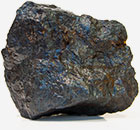There are various industries comprising the markets Quality Magnetite serves, as there are many applications for our products. We categorize the industries we serve into two major market segments: The Coal Industry Segment and the Specialty & Custom Processed Markets Segment.
In the Coal Industry, our product is used as a Dense Media Separation agent in coal washing processes, to help produce clean coal . This clean coal is used in the steel industry as a fuel as well as in steam power generation plants to generate electricity that heat and fuel the homes, businesses, institutions, and factories of America and beyond.
In Specialty & Custom Processed Market industries, various sizing, grading, and chemistry of our magnetite are used in a multitude of applications. This includes serving as heavy aggregate in concrete construction, as well as an additive in various manufacturing processes, bringing unique characteristics to final products including paint, fertilizer, recreational products, and water filtration.
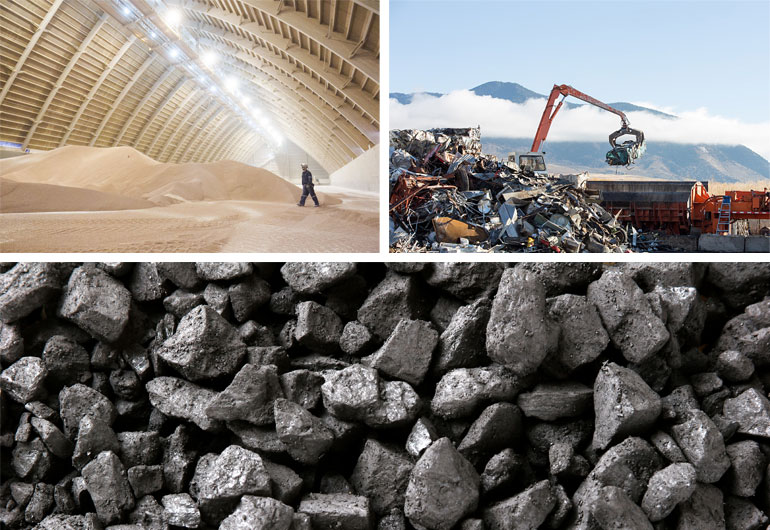
When raw materials are extracted from mines, separating the desired product from unwanted waste materials can be a challenge. With magnetite, though, producers can use basic physics to separate the valuable from the worthless while reducing harmful and even toxic byproducts, through dense media separation (DMS).
Also known as Heavy Medium Separation, DMS is a technique first pioneered in the 1950s in coal refineries that relies on varying densities of a desired product. In coal industries, the run of mine coal contains impurities such as rock, shale, and clays that makes the product unmarketable. By infusing water with magnetite, operators can alter the specific density of the water to a degree so precise that the impurities sink and the good coal floats.
After separating the desirable product from waste, removing the magnetite can be accomplished with the simple application of magnetic forces, which in turn makes cleanup and maintenance a breeze.
Dense media separation processes find wide use
Prior to the development of complex DMS systems, separating valuable product from waste byproducts was challenging. Yet, DMS changed the refining process for any compound where the refined product varies in density from the unrefined product.
The Scrap recyclers also apply the same process. By using DMS they are able to separate the more valuable shredded metals from the seat cushions, rubber, and plastics used in automobiles.
From Potash Mining to sorting industrial grade diamonds from dirt substrate or isolating useful heavy metals, such as lead or gold, heavy medium separation is a vital tool in isolating important component materials and compounds.
Picture a gold prospector beside the river. The prospector swirls the pan, filled with dirt and clay and water, watching as the heavier particles sink to the bottom and then filter out, leaving behind a fine dust of tiny gold flakes.
Now, imagine that you could change the specific density of the water so that the heavy gold bits sank to the bottom while the clay, dirt and sand were on top while the heavier and more valuable gold particles sank to the bottom. Skim off the top, apply a magnetic field to the separation medium to remove the magnetite, and voila: gold.
That’s not wishful thinking. Let Quality Magnetite provide you with the magnetic materials you need to easily and quickly separate the valuable from the useless.

There is no more vital a resource than a supply of clean, potable water. Yet for millions of people around the world, microbes threaten the water supply while harmful contaminates such as arsenic lurk, waiting to cause illness or even death.
Removing these harmful substances is no easy task, and water systems rely on a host of chemicals and compounds to ensure that clean, potable water flows readily when consumers turn on the tap.
Better water through basic chemistry
When it comes to purifying raw water for bathing and drinking, two of the most important chemicals water systems use are ferric chloride and ferric sulfate. As the name indicates, both of these chemicals rely on iron (ferrous) to work.
By infusing raw water with ferric chloride and ferric sulfate, engineers are able to clean the water of bacteria, protozoa and contaminates to help ensure a safe, ready supply of this vital resource is on tap at all times.
Removing poisons with magnetite
In 2011, a USGS survey revealed a startling finding: more than 13% of all groundwater sources were contaminated with arsenic or other heavy metal contaminates. Enter magnetite, which has a unique set of properties that allows it to break up arsenic and spirit it out of the water.
Using extremely fine particles of magnetite, engineers can effectively, quickly, and safely remove arsenic. Once the arsenic is sequestered away, the magnetite can be extracted utilizing simple magnets or filtration systems, producing clean, potable water for consumers.
By adding Magnetite as a “Ballast” increased treatment capacity can be achieved through a faster settling rate during the clarification process. In most cases this addition can greatly expand the amount of water treated within the existing footprint.
Coprecipitation, microfiltration and oxidation
Using extremely refined nanoparticles of magnetite, industrial water consumers are able to reduce contaminates in effluent through three diverse methods.
First, in coprecipitation, magnetite is introduced in water to increase its specific density and change the composition until the offending compounds begin to dissipate. As the particles dissipate, they fall with the magnetite to the bottom of the water making for easy extraction of treated water.
A second method – microfiltration – relies on the filtering properties of magnetite to prevent certain offending chemicals to proceed through tiny barriers before these chemicals are removed. When combined with coprecipitation, microfiltration is one of the most effective methods of dealing with biological and organic contaminates in effluent.
Finally, when it comes to those harmful heavy metals, such as arsenic, uranium or lead, magnetite’s unique oxygen-bonding properties come into play. Magnetite is introduced, and the compound eagerly releases oxygen, which in turn bonds with other metals, altering their densities and specific gravities, which allow for separation through passive means or mechanically assisted means.
Whether it’s knocking out bad bacteria or extracting harmful radioactive substances, magnetite plays a vital role in the treatment and disposal of contaminated water.

In order to feed the more than 7 billion people on the planet, the markets rely on industrial agriculture to crank out acre after acre of high-yield, high-value crops. In order to accomplish this feat, agricultural operations require vast quantities of fertilizers and nutrients in order to maximize crop outputs.
Magnetite serves a vital role in the world’s food chain. Whether it’s as a catalyst for the production of fertilizer or as a micronutrient added to the soil to provide just a little boost of iron to young crops, magnetite’s role in agri-business is continually growing and evolving.
Fertilizers made possible through magnetite
A core component of many industrial fertilizers is Chelated Iron and Iron Sucrate. Magnetite is a key component in the production of these two products. Chemical engineers can also introduce quantities of magnetite to the reactions that release ammonia, and magnetite again acts as a catalyst for the capture of ammonia. Without ammonia, many fertilizers would be useless. And without magnetite to act as a catalyst, the production of ammonia would be a far more expensive and potentially more dangerous occupation.
Yet, with magnetite, the production of ammonia is rendered safer and faster, improving output and the quality of fertilizers in the field. Without magnetite, many fertilizers in use today would never have seen the marketplace.
Enriching soil and bolstering crops with magnetite
In addition to its role as a valuable catalyst in a host of reactions, magnetite also makes an effective and efficient micronutrient that, when added to the soil, provides young plants an added boost of iron and oxygen.
Many plants rely on a steady supply of iron to grow healthily, to produce fruit, or to improve uptake of the fertilizers that improve crop yields. When magnetite is added to soil, it can produce more robust crops with stronger, nutrient-rich soil.

Americans love innovative painting. Just ask the American paint and pigment industry – a whopping $9 billion juggernaut that feeds consumer demand for an ever-increasing palette of exciting new colors and products.
Dark, rich earth tones are all the rage, and these colors rely heavily on black dye to add depth and texture to colors and stains. Magnetite is a vital component in producing the dark, rich black dye upon which so many of these colors are based.
But it’s not all basic black. Magnetite-infused paints are also being sold to businesses, educators and more than a few parents who are hoping to put a little “wow” factor into that new paintjob. By infusing varying amounts of magnetite into primers and paints, the products transform virtually any wall surface into a magnetic surface after painting.
Little Johnny’s drawings aren’t relegated to the refrigerator any longer. With magnetite-infused primers and paints once applied to the walls and dry, magnets adhere to the surface just like it was the refrigerator door, meaning your child’s masterpiece can take up residence anywhere magnetite paints have been used.

You’ve seen them on the sides of cars and stuck to the sides of vending machines. They’re the flexible, colorful magnetic advertisements for everything from insurance agents to plumbers, and without magnetite, those ads wouldn’t be possible.
Ferrite is a ceramic compound that contains hematite and magnetite, and because it’s a ferromagnetic material, it will attract naturally – if temporarily — to metal surfaces. When blended with vinyl, magnetite becomes a flexible, durable medium to affix and display advertising.
The same properties that make ferrite compounds a popular and valuable choice for sticking advertising on the sides of cars and bus stops also drives another, more important use for the substance: magnetic seals.
Close the refrigerator and you’ll feel the satisfying security of an air-tight bond between the door and the frame. Or maybe that storm door on your house clicks shut just so, locking in that valuable, cold air and sealing out the elements.
By placing long, flexible strips of magnetite-infused vinyl along the edges of doors, windows, and other moving components, designers can ensure a tight but easily breakable seal. Your food stays fresher, your house stays cooler, and it’s all thanks in no small part to magnetite.
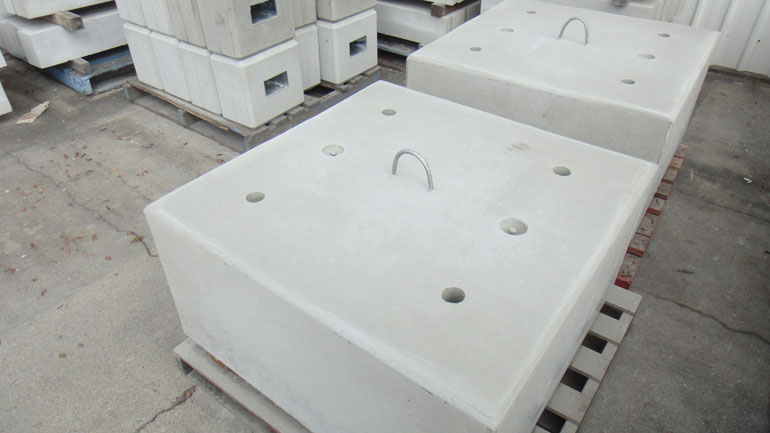
Since ancient Rome, concrete has been a wonder product, enabling the construction of both extensive, durable roads and massive structures that soar above our heads. Concrete has also proven to be a valuable material in the manufacturing field, where engineers have designed everything from small refractories to massive chambers out of concrete.
Recent research shows that magnetite aggregate in concrete allows the material to perform well at much higher temperatures than non-magnetite infused concrete. This discovery marks an important milestone for concrete, which previously was susceptible to cracking and degrading when subjected to extreme temperatures.
Magnetite aggregate is also a key component to protecting personnel and equipment from the harmful effects of gamma radiation. Long the go-to choice for reactor shielding, magnetite aggregate is added to concrete to increase density, which improves the performance of concrete shielding, blocking harmful radiation and preventing heat buildup, which can degrade concrete’s performance over time.
With magnetite aggregate heavy concretes, structures are stronger and safer longer than their non-magnetite counterparts.
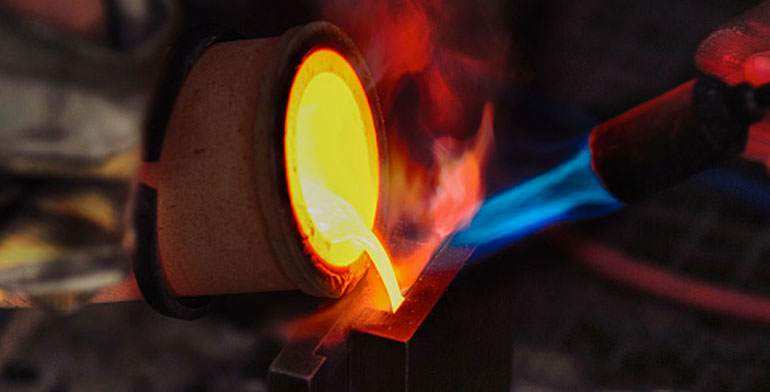
Casting metal is an ancient art. Since the birth of the Bronze Age, the process of metal casting has evolved through incremental improvements to technology and process. While these refinements have driven incremental changes, the core foundry process remains the same.
Liquid, refined metal is poured into a hollow mold that shapes the metal. When the metal cools, it hardens into the casting and the mold is opened to remove the casting, completing the process.
Throughout history, refinements arose and the quality of metals improved. New additives were developed and perfected to bring new qualities to the castings. Colors and strengths improved, giving foundries the ability to cast ever-more-complex shapes. As smelting improved, so too did the quality of base metals and the alloys produced from careful addition of new materials.
Magnetite (Black Iron Oxide) as a Foundry Mold component
Crushed and graded magnetite ore is mixed with clay to form foundry molds and cores. These molds or cores are useful when casting non-ferrous metals or alloys, especially light metals and light-metal alloys
Black Iron Oxide: a brief introduction to magnetite
Iron ores comprise any number of rocks from which metallic iron can be extracted and smelted. These rocks and minerals vary in color, quality and iron content, and within these rocks the most common form of iron found is magnetite.
Whether it’s hematite or magnetite, ores containing very high quantities of either compound – greater than 60% iron – are known as “natural ores.” At the foundry, these natural ores can be fed directly into the blast furnace to produce pig iron, the main raw ingredient used in the creation of steel — a material that ranks among the most critical commodities in the world.
Metal casting 101: sweating like a pig
Pig iron is such a crucial component of the global commodities market that its name has become synonymous with hard work. When smelters produce the pigs, as the refined metal cools, water condenses on the surface, giving the chunks of iron the appearance of sweating.
The quality and properties of pigs are dictated by the various additives. During smelting or direct reduction, oxygen is removed. But these oxide bonds are strong, and to prevent oxygen from just reattaching to the iron atoms, smelters must introduce other elements to which oxygen can bond. Smelters introduce carbon to the process, and this carbon carries the oxygen atoms away from the iron in the powered ore.
Red & Black: know the ore by its color
Whether an ore consists of red iron oxides or black iron oxides, expert smelters can identify the compounds present by their color. The richer the ore in valuable iron, the greater the color.
Color varies in ores from a dark grey to black, or from a pale red to a darker, rusty red. Though the process for extracting the metal from the ore varies slightly, both red iron oxide – hematite, and black iron oxide – magnetite, are great sources for natural ore and play a vital role in supplying the world with steel-making iron.
From critical electronics to beautiful art, magnetic fluids play an important role in hundreds of processes, devices and products. Known as ferrofluids, these amazing liquids contain millions of of nano- or even microscale particles of magnetite or other iron-containing compound.
 The typical ferrofluid contains magnetic solids suspended in a surfactant. The magnetic particles are dispersed evenly throughout the liquid, and this unique distribution makes these fluids something special. They’re called a colloidal suspension, which means that ferrofluids have properties of more than one state of matter – in this case, a solid metal and a liquid carrier fluid.
The typical ferrofluid contains magnetic solids suspended in a surfactant. The magnetic particles are dispersed evenly throughout the liquid, and this unique distribution makes these fluids something special. They’re called a colloidal suspension, which means that ferrofluids have properties of more than one state of matter – in this case, a solid metal and a liquid carrier fluid.
If you’ve seen The Big Bang Theory, you may have seen a colloidal suspension dancing on a speaker as a solid, only to transform into a liquid when the speaker is turned off. Possessing two states of matter as ferrofluids does makes these unique compounds useful as seals and lubricants, and current research trends suggest ferrofluids might be used in nanotechnology.
While all ferrofluids are powerful tools for the development of technology, one of the most interesting subsets of ferrofluid are magnetorheological fluids, or MRFs. These fluids solidity in the presence of a magnetic field, opening up the possibility of using these amazing suspensions in any situation where one might need to transform frequently between a liquid and a solid. Here are just a few of the hundreds of applications for ferrofluids and MRFs:
Electronic devices
From the moment you power on your computer until you shut it down, the computer’s hard disk drive is spinning anywhere from 4,200 RPM to a staggering 7,500 RPM. Keeping that drive spinning requires precision design and durability made possible only through the use of remarkable lubricants. When placed into the microns-wide gap between the magnet and the shaft of a hard drive, ferrofluid forms a barrier which prevents debris from entering the hard drive while also providing a viscous membrane in which the drive can spin.
Heat Transfer
Few factors cause more damage to complex machines than excess heat, which can weaken metal, degrade electronic components and break down vital lubricants and seals. When an external magnetic field is imposed on ferrofluids, the fluids become a conduit for thermomagnetic convection – moving heat away through the flow of magnetized particles.
Because these particles are so tiny – again on the nano- or even microscale – ferrofluids make ideal heat transfer systems in miniature and microscale devices or even in reduced gravity conditions.
Where other cooling methods require the presence of fans to move air or pumps to circulate fluid, ferrofluids move on passive magnetic forces, which means the system cools without the need for additional power.
Materials Science
In addition to saving the British Navy from a new type of anti-ship mine during World War II, physics pioneer Francis Bitter developed a technique by which magnetic domain structures on the surface of ferromagnetic materials might be imaged using ferrofluids.
Analytical instrumentation
Each grain of ferrous material in a ferrofluid reflects light, giving ferrofluids special refractive properties. Each grain is a micromagnet, and when used in conjunction with a helium-neon laser, a polarizer and an analyzer, ferrofluids are critical components of measuring specific viscosity of liquids.
Optics
One of the challenges with earth-based telescopes are the requirements for the mirrors. Once the mirror is ground to shape and polished, certain of the mirror’s properties – focal length, depth of field, and others – are set, thus limiting the telescope’s utility in certain areas of study. However, researchers are currently adapting ferrofluids in an effort to create shape-shifting magnetic mirrors to create earth-based telescopes with fully adaptive optics.
Art
Wherever there is science, art is never far behind. That’s true of ferrofluids, where artists and museums are finding new and exciting uses for these compounds and their remarkable properties. From fountain shows to music videos, ferrofluids are making their way into art. Here are just a few examples:
- Sachiko Kodama – ferrofluid artist
- Pendulum – Australian electronic rock band incorporating ferrofluids into their music video for “Watercolour”
- Martin Frey – SnOil (2005), a pixel-based ferrofluid display that used electromagnets to display text and run games
- CZFerro – An American art studio that uses ferrofluids in unique suspension solutions.
A nubile material for diverse applications
From the farthest reaches of the solar system to the tiniest spaces inside your computer, ferrofluids are there, empowering innovation from the largest helicopters to the smallest micro machines.
For more information about the potential applications for magnetite, including ferrofluids, continue browsing our research pages.
While magnetite has been an important raw material for iron and steel for centuries, scientists and engineers continue to discover innovative new uses for the mineral. Whether it’s creating newer, more effective sound-dampening for automobiles or developing traceable polymers, magnetite’s utility continues to grow into these new and exciting fields.
Improving sound and vibration dampening
Engineers introduce magnetite to plastics and polymers to add mass or improve density. In the automotive industry, designers have long turned to ethylene vinyl acetate (EVA) for use as sound dampeners. By adding magnetite to EVA, the auto industry is producing quieter rides without harsh ecological side effects.
Increasing functional density is another important use, and on oil platforms, magnetite finds use both as ballast and counterweights to improve stability. This is just one of potentially thousands of uses for magnetite-rich compounds to be used as ballast or counterweights in industrial systems.
Increasing quality and function through density
Sometimes it’s important to increase the density of a material in order to improve an aesthetic feel of quality. This is often the case with injection-molded plastics and polymers, where a light material is high-strength but nevertheless feels “weak” due to its weight.
By adding magnetite to compounds where mass and density is important for both aesthetic and functional reasons, makers increase the heft of the product, resulting in a sense of quality or weightiness.
Consider polypropylene, nylons (polyamides) and polyethylene – three compounds from which myriad consumer and industrial products are fashioned. While sturdy, these materials are light. The addition of magnetite offers a boost in density and weight, adding heft and a sense of quality to these creations.
Keeping track of materials with the magic of magnets
A new, emerging field where magnetite is finding wide adoption is as a filler to objects where the addition of magnetic properties to an otherwise inert compound is useful. By adding magnetite to plastics and rubbers, these materials can be infused with magnetic properties.
The application of these new compounds is vast, from using electronics or other sensors to track the movement of a material through a complex system to facilitating the removal of a compound at a particular point in a system. By adding magnetite to rubbers, plastics and other polymers, these materials become magnetically reactive while the host medium remains inert to magnets. That means it becomes easy to remove the magnetite compound from a system using simply magnetics, which is useful in such diverse applications as quality control in chemical factories to leak detection in plumbed systems.

The utility industry has been searching for an affordable and effective way to reduce mercury and other toxic emissions for years. Emerging technologies exist that substantially reduce emissions at Coal fired power plants. By adding a combination of products – one being Iron Oxide – Mercury, NOX, and SOX emissions are reduced through chemical bonding. The bonding occurs during the cooling process and that captures the Mercury, etc. and it becomes part of the ash rather than released into the air.
Magnetite is also revolutionizing the coal-powered electrical industry through an exciting process that produces vast amount of heat and pure, extractable carbon dioxide which is easy to capture and sequester away. Through a process called chemical looping, energy is produced cleaner than traditional, open burn techniques, and this just may be the future of cheap, carbon-reducing energy production.
Chemical looping reduces emissions and byproducts
Where traditional coal plants burn coal in the open air, chemical looping is a process that takes the coal and introduces it to oxygen-bearing materials, like iron oxide, in a closed system.
Iron reacts with the coal, and energy bound in the coal breaks the bonds between the iron and oxygen. Later in the reaction, iron interacts with air, and the chemical reaction produces heat, which is used to produce steam. This reaction takes place at much lower temperatures than traditional coal burning, and it produces almost no nitrogen oxide and a nearly pure stream of carbon dioxide, which can be siphoned off for underground storage.
Though currently in stages of research, construction is underway in Alabama on a 250-kilowatt coal-powered plant using the new technique. Researchers believe that chemical loop plants may be one of the cheapest ways to reduce carbon dioxide emissions.

At the gym, you struggle through the burn to complete just one more drop set before returning those free weights to the bench. Later, at the bowling alley, you twist your wrist just so to send the ball curling towards another strike.
In both cases, you can thank magnetite for enriching that experience. Magnetite is a frequent component of many sporting goods you use every day as a material to add weight or dynamic mass to objects.
Consider the bowling ball. A thick shell of urethane is applied to a solid core of iron ore. As the amount of iron ore increases, so too does the weight of the ball. By moving the magnetite core’s position within the urethane, designers can alter the performance – or spin – of the ball, so you can bend that ball like Beckham when it comes time to slam away that late-breaking strike.
In the gym, magnetite abounds. Designers powder iron ore and blend it with binders to create a pourable, heavy aggregate concrete. Molded to shape and finished in vinyl, plastic, or other casing, this process is most often seen in weight lifting plates, though it exists throughout the gym in hand weights, counter weights, and even those fancy, machine-assisted all-in-one workout devices.
From counterweights to produce just the perfect spin to heavy aggregate concretes, magnetite finds a host of uses in the sporting goods and equipment we use to stay fit and entertained.
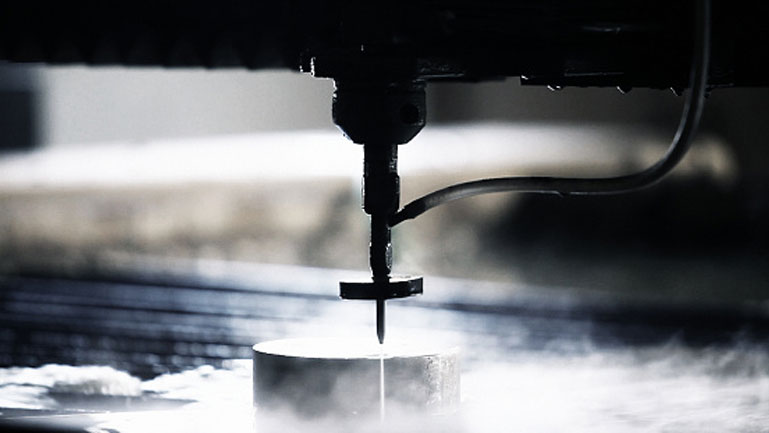
Most people are aware of emery – the natural mixture of magnetite and corundum (aluminum oxide) – from tiny emery boards, those scratchy bits of drug store cardboard we use to file down hangnails and keep our fingernails kempt.
When it comes to abrasives, emery is one of the most versatile substances, finding its way into numerous applications where controlled abrasives are required. However, the supply of natural emery is limited and inconsistent. Manufacturing and scientific applications of the substance require much more precise compositions for a uniform grit, the level of abrasiveness in a substance.
By mixing high-quality magnetite with varying quantities of aluminum oxide, or corundum, manufacturers can create synthetic emery, opening up new applications across a wide spectrum of industries.
Sandblasting with synthetic emery
Sandblasting is the use of a fine-grit abrasive blasted with air through a nozzle to remove paints and coatings with minimal damage to the substrate. Extensively used in the automotive repair industry, sandblasting requires a uniform abrasive agent, the kind of abrasive provided by synthetic emery.
Using synthetic emery, manufacturers can control precisely the mix of magnetite and aluminum oxide, the size of the particles of each, and even the consistency of the agent by the introduction of other materials, such as silica. This precise level of control creates new products and new applications for existing products, including multi-layer coating removal and high-precision etching.
Cutting metal with emery
When it comes to the precision machining of metal, few if any techniques approach the precise cuts and high-quality edges of waterjet cutting. If you’ve ever seen an Apple iPhone, you’re familiar with the beauty and the detail made possible through the use of waterjet cutting.
In many waterjet cutting techniques, synthetic emery is added to the water to improve cutting power, allowing for this emerging metalworking technique to be used on an ever-increasing range of materials, including aluminum, glass, and even stainless steel.

Many have long suspected the healing power of magnets to alleviate pain and to treat other illnesses. In addition to its beauty, magnetite jewelry may also provide relief for chronic pain and maladies affecting thousands.
All the while, the cosmetics and hair care industry continues to develop new and exciting uses for magnetite, benefiting consumers and growing markets. Here are just a few ways magnetite is impacting the therapeutic and cosmetic world.
Using paramagnetics to alleviate pain and treat symptoms
Magnetic therapy is a huge industry and it’s growing. According to industry experts, more than a billion dollars of therapeutic magnetite products will be sold this year.
As this emerging field continues to develop, access to the quality magnetite and hematite necessary to fuel demand increases. Meanwhile, jewelry designers and alternative medicine practitioners alike continue to design new products to feed consumer desire for paramagnetic therapies.
Cosmetics advance with magnetite
The U.S. cosmetics industry is a hyper-competitive, $12 billion marketplace peopled with an enthusiastic and demanding audience. Within this space, haircare products rank up a whopping $4 billion in sales annually. Consumers want exciting new products, and thanks to magnetite they’re getting them.
Whether it’s in the form of a lactoferrin-infused facial mask enhanced with magnetite, or hair gel rich in magnetite to help rejuvenate hair and control frizz, cosmetic and hair care product manufacturers are finding exciting new uses for magnetite and its paramagnetic properties.

Obstetricians on the maternity ward recommend expecting mothers take iron supplements to ensure a healthy infant after a strong pregnancy. Across the hospital, a radiologist examines a young baseball player’s MRI for signs of a concussion.
In both of these situations, magnetite plays a vital role. In fact, the medical industry relies on magnetite for thousands of vital treatments and procedures. And the role magnetite plays in healthcare continues to evolve as exciting new drug therapies arrive on the scene.
Targeted chemotherapy made possible by magnetite
Imagine a world in which highly customized, high-potency chemotherapy is directly applied to a tumor for a prescribed period of time. The ability to control a drug while in the body would allow for more powerful drugs to be applied in smaller doses, improving the efficacy of treatment and minimizing side effects.
Researchers believe this is possible by combining ferrofluids with chemotherapy drugs. Hypothetically, a thin layer of ferrofluid encloses the drug, which is directed to the site of the cancer by way of magnetic fields. Once the drug is administered for a specific time, the magnetic field is turned off and the drug dissipates into the body.
While minimizing the required dosage, this treatment protocol would also dramatically increase the efficacy of such treatments, and researchers are confident that drug targeting will soon be a reality.
Burning away tumors without harmful radiation
Another major field of cancer treatment may vanish, thanks to the use of ferrofluids. Long a staple of the cancer treatment field, radiological therapy – the application of targeted radiation to essentially burn away tumors – could become a thing of the past.
Researchers are studying the potential therapeutic applications of injecting tumor sites with ferrofluid and then using magnetic oscillation to heat the tumors. The vibration would create friction, releasing thermal energy that destroys the desired cells without damaging surrounding tissues. This process is called targeted magnetic hyperthermia.
Successful application of targeted magnetic hyperthermia could dramatically reduce and even potentially eliminate the need for radioactive therapies, which are frequently harmful or painful to endure.
Improving medical imaging and other new treatments
One of the greatest limitations of medical treatment today is the ability to see inside of a patient. While MRIs have incrementally improved over the decades, the technology is far from precise. With the selective application of ferrofluid-rich contrasting agents, though, radiologists may be able to improve both the quality and the contrast of MRI images, greatly increasing the image’s use for diagnostic and treatment protocols.
Along those same lines, researchers now believe magnetite may play a key role in the successful separation of cancer cells from healthy cells. They’re attempting to produce compounds that affix to cancerous cells, which could then be separated at the cellular level by means of magnetic fields. One of the first uses for this technology, if successful, will be in the field of bone marrow transplants, where a patient’s own, healthy cels can be separated and then transplanted back into the patient.

Pipelines are a vital part of the national infrastructure, and every day, billions of gallons of oil, natural gas, water and other fluids are transported through pipes buried in the ground or sunk to the bottom of rivers and lakes.
Protecting the millions of miles of pipelines from the harmful effects of floatation, movement, and even corrosion, magnetite is finding increased usage in concrete weight coating (CWC), a plant-applied coating that provides additional negative buoyance for off-shore pipes, river crossings, and other aquatic pipe environments.
By adding weight to the pipe, CWC helps keep movement and vibration down, prevents slipping and damage to the pipe, and protects the pipe from corrosion.
With CWC, pipes are coated at the manufacturing facility with a special formula of magnetite-infused concrete. The iron ore not only makes for a heavier, smoother concrete product. It also ensures even distribution and a smooth, less porous coating to help protect the pipe for many years to come.

While magnetite has been an important raw material for iron and steel for centuries, scientists and engineers continue to discover innovative new uses for the mineral. Whether it’s creating newer, more effective sound-dampening for automobiles or developing traceable polymers, magnetite’s utility continues to grow into these new and exciting fields.
Improving sound and vibration dampening
Engineers introduce magnetite to plastics and polymers to add mass or improve density. In the automotive industry, designers have long turned to ethylene vinyl acetate (EVA) for use as sound dampeners. By adding magnetite to EVA, the auto industry is producing quieter rides without harsh ecological side effects.
Increasing functional density is another important use, and on oil platforms, magnetite finds use both as ballast and counterweights to improve stability. This is just one of potentially thousands of uses for magnetite-rich compounds to be used as ballast or counterweights in industrial systems.
Increasing quality and function through density
Sometimes it’s important to increase the density of a material in order to improve an aesthetic feel of quality. This is often the case with injection-molded plastics and polymers, where a light material is high-strength but nevertheless feels “weak” due to its weight.
By adding magnetite to compounds where mass and density is important for both aesthetic and functional reasons, makers increase the heft of the product, resulting in a sense of quality or weightiness.
Consider polypropylene, nylons (polyamides) and polyethylene – three compounds from which myriad consumer and industrial products are fashioned. While sturdy, these materials are light. The addition of magnetite offers a boost in density and weight, adding heft and a sense of quality to these creations.
Keeping track of materials with the magic of magnets
A new, emerging field where magnetite is finding wide adoption is as a filler to objects where the addition of magnetic properties to an otherwise inert compound is useful. By adding magnetite to plastics and rubbers, these materials can be infused with magnetic properties.
The application of these new compounds is vast, from using electronics or other sensors to track the movement of a material through a complex system to facilitating the removal of a compound at a particular point in a system. By adding magnetite to rubbers, plastics and other polymers, these materials become magnetically reactive while the host medium remains inert to magnets. That means it becomes easy to remove the magnetite compound from a system using simply magnetics, which is useful in such diverse applications as quality control in chemical factories to leak detection in plumbed systems.
Improving Thermal Shielding Values
By adding Magnetite to thermal shielding components heat retention can be increased, and when needed, these components can also improve heat resistance.

Solar cells are everywhere, from roofs of houses to the tops of light poles. Solar energy is a cornerstone of the push for clean, renewable energy, and magnetite may play a vital role in unlocking the full potential of the Sun.
Researchers recently announced that a new solar cell design featuring magnetic nanoparticles (MNPs) showed a 13% higher output than non-MNP cells. In these new cells, scientists created thin films of MNP aligned via magnetostatic fields.
This MPN film created a smoother surface with greater transparency and a higher electrical conductivity than traditional solar cells. In the very near future, magnetite-infused solar panels could be coming to a rooftop near you.

Since ancient Rome, concrete has been a wonder product, enabling the construction of both extensive, durable roads and massive structures that soar above our heads. Concrete has also proven to be a valuable material in the manufacturing field, where engineers have designed everything from small refractories to massive chambers out of concrete.
Recent research shows that magnetite aggregate in concrete allows the material to perform well at much higher temperatures than non-magnetite infused concrete. This discovery marks an important milestone for concrete, which previously was susceptible to cracking and degrading when subjected to extreme temperatures.
Magnetite aggregate is also a key component to protecting personnel and equipment from the harmful effects of gamma radiation. Long the go-to choice for reactor shielding, magnetite aggregate is added to concrete to increase density, which improves the performance of concrete shielding, blocking harmful radiation and preventing heat buildup, which can degrade concrete’s performance over time.
With magnetite aggregate heavy concretes, structures are stronger and safer longer than their non-magnetite counterparts.
